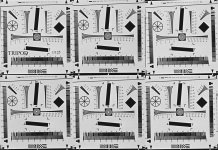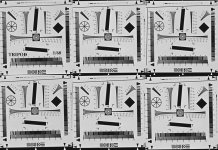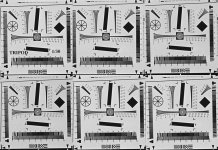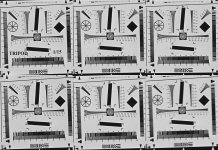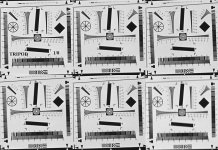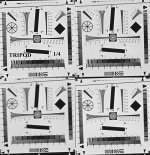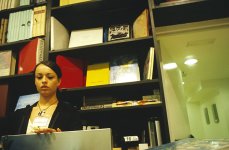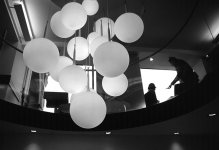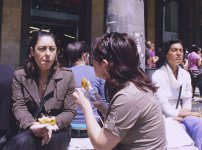mfogiel
Veteran
I am coming back on the question of the critical sharpness when handholding a rangefinder. The lure of being able to shoot in available light at lower speeds respect to a SLR has been one of the two main reasons to try a ranngefinder ( the other being the relative compactness). I have started my tests with a BESSA R4A and an Elmarit 28/2.8.
The shots have been done from a distance of about 1m on a 100 ISO transparency, and then converted to b&w for the sake of clarity. I have done some capture sharpening, though not excessively - at a usual level for a medium acutance subject. The results are displayed as a mosaic, with the upper left shot done on a tripod for reference. Unfortunatelly, I have wasted a couple of frames too many at the beginning of the roll, so the last test consists of just 4 shots, but I think it is sufficient anyway.
I am not claiming to be a particularly steady hand guy, but I have tried to concentrate on my task, and surely in real life field conditions it would be difficult to expect a better result (from me)... So take the results with a pinch of salt, as your hand could be more steady...
The single crops are 910x941 pixels, and correspond to a scan @4000ppi. If you print such a scan at 240dpi, you get a 15x22,6 inch print (38x57cm), pretty much an A2 size, and bigger than most of us would be prepared to print from a 35mm negative.
I have actually printed these pages, so my comments will refer to what I can see on paper.
Finally, let's hope I will manage to post all this without making a mess...
The first image relates to the speed of 1/125 (f2.8), and I can see that all the frames are critically sharp, maybe with the exception of the third, but I am convinced this is related to a slight misfocussing, and not image blur.
The shots have been done from a distance of about 1m on a 100 ISO transparency, and then converted to b&w for the sake of clarity. I have done some capture sharpening, though not excessively - at a usual level for a medium acutance subject. The results are displayed as a mosaic, with the upper left shot done on a tripod for reference. Unfortunatelly, I have wasted a couple of frames too many at the beginning of the roll, so the last test consists of just 4 shots, but I think it is sufficient anyway.
I am not claiming to be a particularly steady hand guy, but I have tried to concentrate on my task, and surely in real life field conditions it would be difficult to expect a better result (from me)... So take the results with a pinch of salt, as your hand could be more steady...
The single crops are 910x941 pixels, and correspond to a scan @4000ppi. If you print such a scan at 240dpi, you get a 15x22,6 inch print (38x57cm), pretty much an A2 size, and bigger than most of us would be prepared to print from a 35mm negative.
I have actually printed these pages, so my comments will refer to what I can see on paper.
Finally, let's hope I will manage to post all this without making a mess...
The first image relates to the speed of 1/125 (f2.8), and I can see that all the frames are critically sharp, maybe with the exception of the third, but I am convinced this is related to a slight misfocussing, and not image blur.


